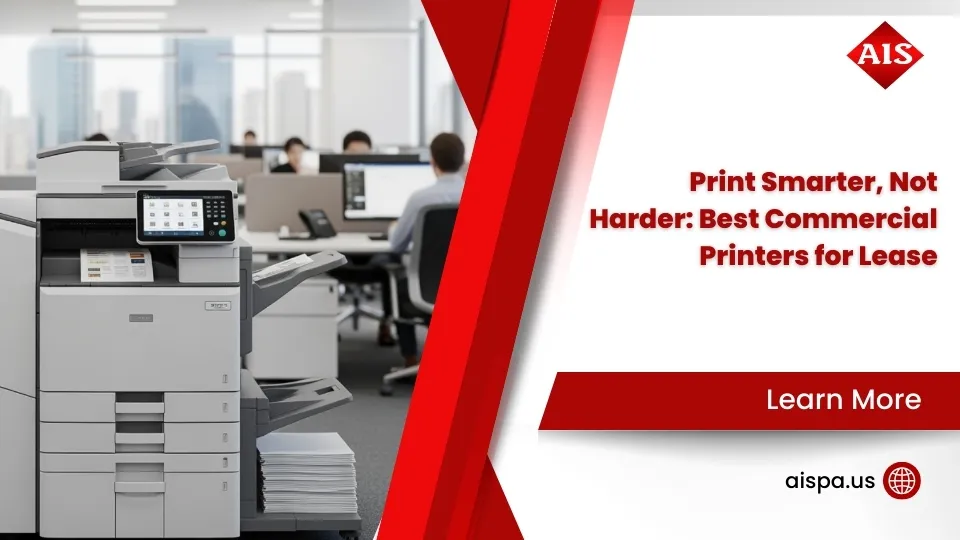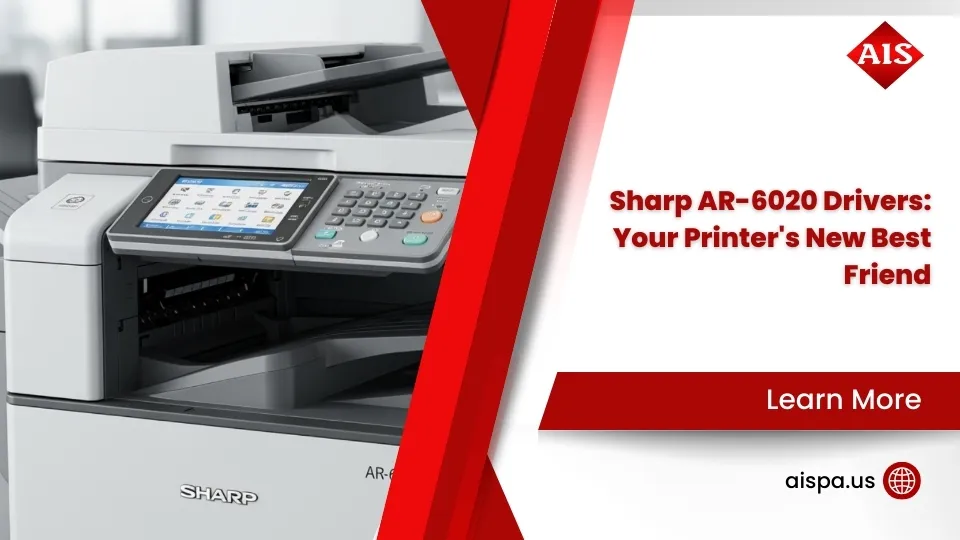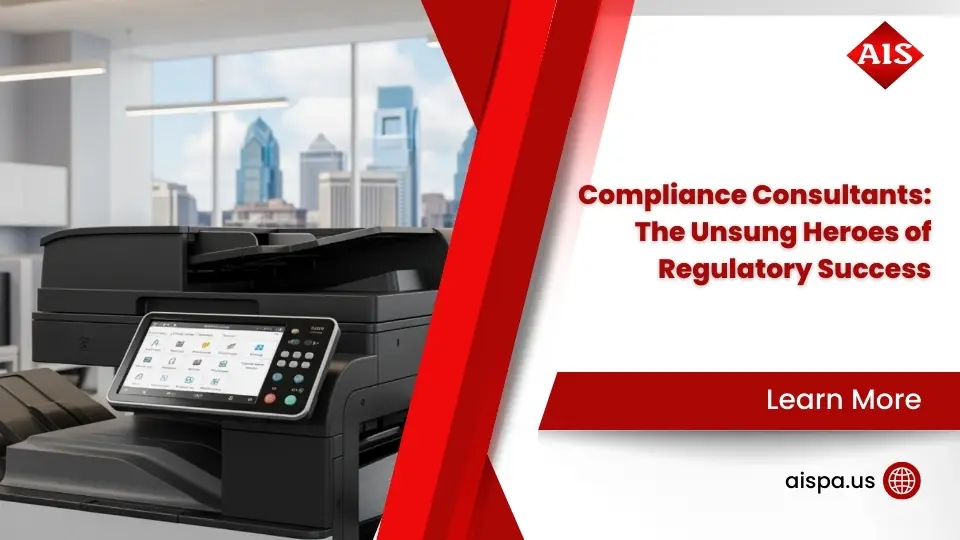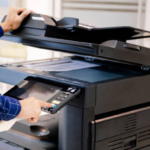Print Smart: How Energy-Efficient Office Printers Can Save You Money
Energy-efficient office printers are a must-have for any modern workplace, helping you cut electricity bills and support sustainability goals. Choosing printers designed for efficiency lowers your carbon footprint and puts money back into your budget.
To reduce energy consumption from your office printers, consider these key factors:
- ENERGY STAR Certification: This label indicates a printer can save up to 35% on energy compared to standard models, especially when idle.
- Power Management Features: Look for effective sleep modes and auto-off technology. Modern printers can use as little as 0.2 watts when not in use.
- Automatic Duplex Printing: Printing on both sides of the paper saves paper, energy, and the resources needed to produce and dispose of prints.
- Printing Technology: Newer inkjet models with “heat-free” printing can be highly efficient. Laser printers are best for high-volume tasks, especially with effective sleep modes.
Outdated office equipment can drain your budget through high energy use, adding to operational costs and harming the environment. By choosing efficient printers, your business demonstrates a commitment to sustainability while improving its bottom line.

Know your energy-efficient office printers terms:
What Makes a Printer Energy-Efficient? Key Features to Look For
When discussing energy-efficient office printers, we’re referring to specific built-in features that reduce wasted energy, especially when the printer is idle. These smart designs are key to cutting power consumption and supporting environmental goals.
Key energy-saving features include:
- Power Management: The printer’s ability to dynamically adjust energy use, powering down components when not busy.
- Sleep Modes: A low-power “nap” state the printer enters when inactive, using significantly less energy than when fully awake.
- Auto-Off Technology: A smart feature that completely powers down the printer after a set period of inactivity to save every possible watt.
- Automatic Duplex Printing: This feature prints on both sides of the paper, drastically cutting paper consumption and the energy required for paper production and transport.
- High-Yield Consumables: Long-lasting ink tanks or toner cartridges reduce the frequency of replacements, which means less manufacturing, packaging, and shipping waste.
- Multifunctionality: Combining printing, copying, scanning, and faxing into one machine saves energy by reducing the number of devices plugged in.

The Power of Sleep: Understanding Low-Power and Sleep Modes
A printer often wastes the most energy when it’s idle, which is why effective power management is a cornerstone of energy-efficient office printers. These devices are designed to be incredibly frugal during downtime.
The power difference between active and idle states is dramatic:
- Active Printing: This is when the printer uses the most power. For example, a laser printer might use around 440 watts, while an inkjet uses about 12-15 watts.
- Ready/Standby Mode: When waiting for a job, power use drops significantly. A laser printer might use 42 watts, while an inkjet could use just 3.6 watts.
- Sleep Mode: After a period of inactivity, the printer enters a low-power state. Power consumption can drop to as low as 0.6 watts for a laser printer or 1.5 watts for an inkjet.
- Deep Sleep/Off (Plugged In): In the deepest sleep state, energy use is minimal. Some printers consume as little as 0.03 to 0.3 watts.
These figures show how modern printers are engineered to sip power when not in use, a key factor in long-term energy savings.
To learn more about how technology can make your printing greener, read our article on Eco-Friendly Printing Technology.
Beyond Energy: How Duplex Printing and Smart Consumables Contribute
True efficiency for office printers extends beyond electricity to your overall environmental footprint. Automatic duplex printing and smart consumables are two features that make a significant impact.
Paper reduction through Duplex Printing is a simple but powerful feature offered by printers like the Xerox C235 and Canon PIXMA G7020 MegaTank. By automatically printing on both sides, you can cut paper usage by up to 50%. This leads to:
- Reduced Costs: Buying less paper saves money.
- Less Production Energy: Making paper is energy-intensive; using less reduces this demand.
- Reduced Waste: The average office worker uses about 10,000 sheets of paper annually. Duplexing helps lower this number. For tips, see our guide on How to Print Double-Sided on Mac.
Smart Consumables and Waste Reduction also play a crucial role. The ink and toner your printer uses have their own environmental impact.
- Toner Waste Reduction: High-yield toner cartridges require fewer replacements, reducing manufacturing and disposal waste. Monochrome printers like the Kyocera ECOSYS M2040dn are a great example of this sustainable approach.
- Less Plastic Waste: Ink tank systems, found in models like the Epson EcoTank ET-2800, use refillable reservoirs instead of disposable cartridges, dramatically cutting plastic waste.
- Manufacturer Recycling Programs: Many brands, such as Xerox with its Green World Alliance, offer programs to recycle used supplies, keeping them out of landfills.
By choosing printers with these features, you make a significant positive impact on the environment. For more tips, check out our article: Eco-Friendly Printing Solutions: Save Costs and Waste.
Decoding the Labels: Why ENERGY STAR and EPEAT Certifications Matter
When selecting a new printer, certifications like ENERGY STAR and EPEAT act as trusted guides to identify truly energy-efficient office printers. Understanding these labels is key to making an informed, eco-friendly choice.
The ENERGY STAR program, initiated by the U.S. EPA, helps identify energy-efficient products. For a printer to earn this label, it must meet strict criteria:
- Third-Party Certified: Independent experts verify its energy performance.
- Designed for Efficiency: It’s optimized to save energy both during active use and, crucially, in low-power idle modes.
- Proven Savings: Certified printers can reduce energy use by up to 35% compared to conventional models.
- Environmental Impact: If all U.S. imaging equipment were certified, it would save over $32 million in electricity costs and prevent 596 million pounds of greenhouse gas emissions annually.
EPEAT (Electronic Product Environmental Assessment Tool) offers a broader assessment of a product’s environmental impact. This global rating system evaluates a product’s entire lifecycle, including materials, longevity, recyclability, packaging, and energy use. Products receive a Bronze, Silver, or Gold rating based on the criteria they meet. For example, an HP LaserJet Pro 4301fdn might have an EPEAT Silver rating.
When a printer, like the Xerox C235, holds both ENERGY STAR and EPEAT certifications, it signals a deep commitment to sustainability across multiple fronts, giving you guaranteed efficiency and peace of mind.

Choosing printers with these certifications is a confident investment in equipment proven to be better for the planet and your budget. These labels simplify the search for genuinely eco-friendly technology.
For more on how office technology is becoming greener, explore our insights on Eco-Friendly Office Technology Trends.
The Dual Advantage: Slashing Costs and Boosting Your Green Credentials
Investing in energy-efficient office printers is a strategic business decision that offers tangible financial benefits alongside significant environmental advantages. It’s a true win-win for any organization.
Here’s how energy-efficient office printers deliver this dual advantage:
Financial Benefits: The most immediate perk is a reduction in electricity bills, as these printers use significantly less power, especially in standby or sleep modes. The savings accumulate across all devices over the year. Costs are also cut through features like duplex printing, which reduces paper purchases, and high-yield consumables, which lower the frequency of ordering ink or toner. Cooler-running, efficient printers also tend to have a longer lifespan, reducing repair and replacement costs.
Environmental & Reputational Benefits: Embracing energy-efficient office printers is a clear way to meet corporate sustainability goals. By using less energy, your business helps reduce the overall demand for electricity, which in turn lowers greenhouse gas emissions. This commitment to sustainability improves your public image, attracting clients, partners, and employees who value eco-friendly practices.
Furthermore, financial incentives may be available. The U.S. government sometimes offers bonus depreciation for qualified equipment, and you may find tax credits or grants—up to 30%—for adopting green business practices. A comprehensive green strategy can even reduce operating costs by as much as 60%.
Choosing energy-efficient office printers is a smart investment that saves money, protects the environment, and strengthens your business’s reputation.
To dig deeper into how eco-friendly solutions can benefit your bottom line, take a look at our article on Eco-Friendly Copiers: Cut Costs and Waste.
Technology Showdown: How Printer Type Impacts Energy Use
When choosing energy-efficient office printers, a key consideration is the difference between inkjet and laser technologies. Understanding how each type uses energy is crucial for selecting the right fit for your office.
Here’s a quick comparison of how inkjet and laser printers stack up on energy and sustainability:
| Feature/Metric | Inkjet Printers (especially Modern Ink Tank) | Laser Printers |
|---|---|---|
| Printing Method | Sprays liquid ink onto paper. Newer models use “heat-free” technology. | Uses toner powder and a fuser unit that heats to fuse toner to paper. |
| Active Printing Power | Generally lower (e.g., Epson EcoTank ET-2800 at 12W, Canon PIXMA TR8620 at 15W). | Can be higher due to fuser unit (e.g., Brother HL-L2350DW at 440W). |
| Sleep/Idle Power | Very low (e.g., Epson EcoTank ET-2800 at 0.2W). | Also very low in deep sleep (e.g., Brother HL-L2350DW at 0.6W). |
| Warm-up Time | Minimal to none, especially with heat-free technology. | Requires warm-up for fuser unit, consuming a burst of power. |
| Consumables | Ink cartridges or refillable ink tanks (less plastic waste with tanks). | Toner cartridges (can be long-lasting). |
| Plastic Waste | Significantly reduced with ink tank systems. | Can be higher if cartridges are frequently replaced. |
| Best Use Case | Low to moderate volume, color printing, photos, home offices. | High volume, black & white text, fast printing, large offices. |
| Heat Generation | Minimal to none (especially “heat-free”). | Generates more heat due to fuser unit. |
| Overall Efficiency | Excellent for lower volumes, particularly with ink tanks and heat-free tech. | Efficient for high volumes due to speed and toner longevity, good sleep modes. |
For a deeper dive, see our full comparison: Inkjet vs Laser Printer.
The Case for Modern Inkjet and Ink Tank Systems
Modern inkjet printers, particularly those with ink tank systems, have made significant strides in energy efficiency. A key innovation is heat-free technology. Unlike laser printers that must heat a fuser, some inkjets use a “cold” process, eliminating warm-up time and reducing power consumption during printing.
Refillable ink systems are another major advantage. Instead of disposable cartridges, these printers use large, built-in reservoirs that you refill from bottles. This design dramatically reduces plastic waste and leads to a much lower cost per page, making it a smart choice for both your budget and the environment.
The Role of Laser Printers in an energy-efficient office printers strategy
Laser printers remain a vital part of an energy-efficient office printers strategy, especially for busy offices. While their fuser unit requires a burst of power to heat up, they excel at high-volume efficiency. They print large jobs quickly, resulting in a very low energy cost per page.
Furthermore, modern laser printers are masters of conservation when idle. They feature highly effective deep sleep modes, where power consumption can drop to less than a watt. This means that for most of the day, the printer’s energy footprint is negligible. Combined with long-lasting toner cartridges that reduce replacement frequency, a well-chosen laser printer is a highly efficient option for offices with steady, high-volume printing needs.
Implementing Your Strategy: Choosing and Using Your Energy-Efficient Office Printers
Pairing energy-efficient office printers with smart habits is the key to maximizing savings and sustainability. The first step is to choose the right equipment for your specific needs.
Start by assessing your typical print volume. A busy office with constant printing may find a robust laser printer more energy-efficient per page due to its speed and high-volume design. Conversely, a home office or small team with lighter needs would benefit from a heat-free inkjet with an ink tank system, which uses less power overall.
Right-sizing your equipment is crucial. Avoid using a large, commercial-grade machine for infrequent printing, as this wastes energy. Today’s energy-efficient office printers no longer force a trade-off between performance and efficiency. Many top-performing models are ENERGY STAR certified. While an eco-friendly model may have a slightly higher upfront cost, the long-term savings on electricity and supplies often make it the more economical choice. A smart sustainable strategy can even cut operating costs by up to 60%.

Encourage your team to adopt these simple, powerful habits to boost efficiency:
- Make Duplex Printing Your Default: Set printers to automatically print on both sides to cut paper use by up to 50%.
- Think Before You Print: Ask if a document can be viewed or shared digitally to reduce unnecessary prints.
- Optimize Sleep Settings: Ensure the printer’s sleep mode activates quickly when idle. Use the factory energy-saving settings.
- Use Secure Print Features: Hold print jobs until you are at the printer to prevent forgotten, wasted pages.
- Use Draft Mode: For internal documents, draft mode uses less ink or toner and often prints faster.
- Consolidate Devices: Replace separate printers, copiers, and scanners with a single, more efficient multifunction printer (MFP).
- Recycle Consumables: Use manufacturer recycling programs for used ink and toner cartridges to reduce landfill waste.
- Power Down When Possible: For long periods of inactivity like weekends, turn printers off completely.
By combining the right energy-efficient office printers with smart habits, you create a powerful cycle of savings. To optimize your entire printing infrastructure, consider our Managed Print Services. If you’re exploring equipment upgrades, learn Why Smart Businesses Lease Office Printers.
Conclusion
We’ve explored energy-efficient office printers, and it’s clear they are a strategic asset for any modern business. The dual advantage is undeniable: you slash electricity bills and operational costs while simultaneously boosting your green credentials.
From power-saving sleep modes and automatic duplex printing to innovative ink tank systems and trusted certifications like ENERGY STAR, the path to a more sustainable printing strategy is clear. By choosing certified equipment and adopting smart printing habits, you can build a cost-effective and environmentally responsible workplace.
Selecting and using energy-efficient office printers smartly is a powerful business decision. It leverages technology to save money, help the environment, and build a stronger, more resilient organization.
Here at Associated Imaging Solutions, we are passionate about helping businesses steer these choices. We combine local expertise with advanced technology to provide high-quality copier rentals, repairs, and managed print services that improve your document management with efficiency and sustainability at their core.
Ready to print smarter, save money, and contribute to a greener future?
Do energy-efficient office printers cost more upfront?
Not always. While some high-end eco-models may have a higher initial price, many ENERGY STAR certified printers are priced competitively. It's more important to consider the total cost of ownership (TCO). The long-term savings from lower electricity bills, reduced paper use, and cheaper high-yield consumables often make them a more economical choice. Additionally, government incentives or tax credits can further reduce the upfront cost.
How much can I realistically save with an energy-efficient printer?
Savings can be substantial. An ENERGY STAR certified printer can use up to 35% less energy than a standard model, primarily due to highly efficient sleep and idle modes where power consumption drops to minimal levels (e.g., under 1 watt). Over a year, this translates into significant savings on your electricity bill. In fact, a comprehensive sustainable business strategy can reduce overall operating costs by as much as 60%.
Are inkjet or laser printers more energy-efficient for my office?
It depends entirely on your print volume and needs. There is no single winner.
Laser printers are generally more energy-efficient for high-volume office environments, especially for text documents. Their speed results in a very low energy cost per page, and their deep sleep modes are extremely effective at saving power when idle.
Inkjet printers, especially modern models with "heat-free" technology and ink tanks, are ideal for low-to-moderate volume offices. They use less power during active printing and significantly reduce plastic waste from disposable cartridges, making them a strong sustainable choice.











